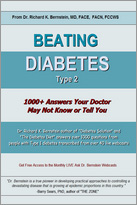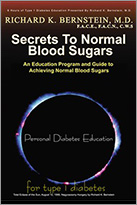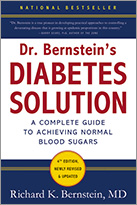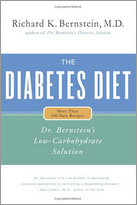It isn’t unusual for people with diabetes to make major changes in other aspects of their lives once their blood sugars have been restored to normal after years of poor control. The changes that we see include marriages, pregnancies, and reentry into the workforce. The story of Elaine L. falls into the last category. She also points out the disabling fatigue that she experienced when her blood sugars were high. This problem has led other diabetics, desperate to retain their abilities to function productively, to abuse amphetamines. Elaine is a sixty-year-old mother and artist. Her story is not unusual.
“When I developed diabetes twenty-one years ago, I began a fruitless odyssey to learn all I could about this disease and to have the tools to be able to deal with the psychological and physical roller coaster that I was experiencing.
“The hardest thing to cope with was the total loss of control over my life. I was told that I was a ‘brittle’ diabetic and that I would just have to endure the very high and very low blood sugars that were totally exhausting me. I feared that my eyes would be damaged. I’m an artist, and this frightened me the most. I knew that this disease was destroying my body every day and that I was helpless.
“We went from doctor to doctor and to major diabetes centers around the country. I never could get a handle on how to become ‘controlled.’ I was given a gold star for ‘good’ blood sugar by one doctor; told I ‘had imbued the number 150 with mystical significance’ by another; informed that if my blood sugars were high after lunch today, I could correct them before lunch tomorrow. All the while, I was feeling worse and worse. I stopped painting. I was just too tired. I was so scared to read any more of the diabetes magazines, because I kept learning more and more about what was in store for me.
“I’d been diabetic about five years when an uncle in Florida advised me to read Dr. Bernstein’s first book. It made a lot of sense, but when I read it, I thought, ‘Diabetes has robbed me of so much already, I don’t have any more time or effort to give to it—and who wants to be a professional diabetic?’ Of course, there was a lot of anger and denial and even attempts to forget about being diabetic. Maybe I could forget about it for a while, but it never forgot about me.
“A seed was now planted, however, in spite of myself. I knew that no matter what happened down the road, I needed to feel that I had tried everything possible, so that I would never have to say, ‘I wish I had done more.’
“I was very wary of my first visit to Dr. Bernstein’s office. I really thought I would hate having to change my diet yet again. I did not relish the idea of multiple daily injections, testing my blood so often, and keeping records. The fact is that I did hate all of that until I found I was recording better and better blood sugars. The diet wasn’t any more restrictive than the American Diabetes Association diet I had been following, and most important, I was feeling better and much less tired. In fact, I began to paint again and soon rented a studio. I now paint full-time, but this time I actually sell my work.
“The regimen that I feared has, in the end, given me the freedom for which I had dreamed.”
Although Elaine does not mention it in her story, her cholesterol/HDL ratio dropped from an elevated cardiac risk level of 4.74 to the “cardioprotective” level of 3.4, as her long-term blood sugars approached normal. Furthermore, her weight has dropped from 143 pounds to 134 pounds, and her hemoglobin A1C has dropped from a very high 10.7 percent to a nearly normal 6.0 percent.




